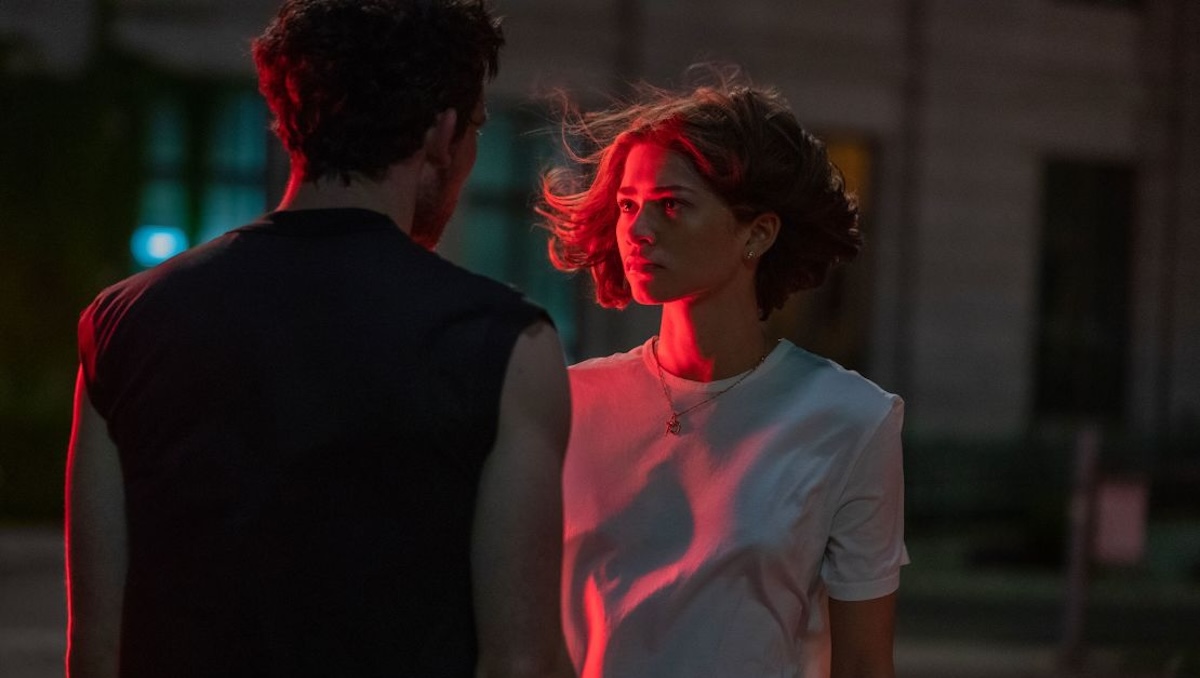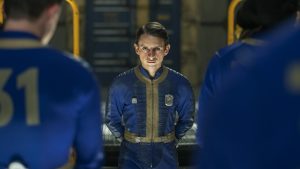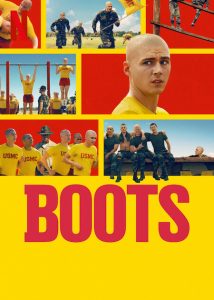
Freud might have once said a cigar is sometimes just a cigar, but the good doctor would never mistake a tennis racket as mere sports equipment when watching Challengers. Those interlaced, titanium-gripped meshworks are extensions and metaphors in the hands of director Luca Guadagnino and his huffing, puffing young cast. What exactly that extension is morphs from scene to scene, but it is always libidinous, unmistakably eager, and ever in search of connection: with the ball, with the other player, or sometimes just with the sweat dripping out their pores.
In one sequence, Zendaya’s tight smile thinly conceals an ironclad will as she explains, “Tennis is a relationship.” The appeal of Challengers, then, is that the dynamics in those relations are never easy to label. They’re as fleeting as the ball’s brief flight across the court. Whatever they are in any given moment, though, can never be mistaken for healthy—or for that matter boring, because this is Guadagnino at his most kinetic, entertaining, and frankly horny.
The first signal toward Challengers’ cunning comes in its structure. When the movie starts, it initially appears to be framed in the cliché flash-forward to the climax where two characters we’ve never met and have no investment in commence in a seemingly life-and-death tennis match. The rivals are Art Donaldson (Mike Faist), the apparent favorite and star, and Patrick Zweig (Josh O’Connor), the unkempt underdog. A mysterious chic woman we later learn is named Tashi Duncan (Zendaya) watches from the stands. Guadagnino hints of the cinematic flash which is to come via the dynamic sound design heard with every serve and parry, yet the opening is filmed a lot like real sporting events. It’s objective and impersonal before we inevitably cut to “three weeks earlier.”
It’s a familiar storytelling trope, but the cleverness of Justin Kuritzkes’ screenplay isn’t that the film jumps back and forth between two points in the narrative. Rather it ties the whole thing up into a knotty mystery that volleys between these three characters’ bitter, current reality, with both Art and Patrick being over the hill for professional athletes in their 30s, and many stages of their youth. There once was a time when Art and Pat were inseparable as teenagers—a time before they met an even bigger rising tennis star, the juniors champ Tashi—and both shamelessly went after her at the same party; there also was a time, years later, when in college Tashi is dating Patrick, the first of them to go pro, while chilling with the Art in the dorms; all of which makes it evermore curious how when we intermittently switch to them in their mid-20s or 30s, it’s Art who Tashi is married to and whose career is on a massive upswing while Patrick struggles to even qualify for the major tournaments.
Challengers is by design a sexy, funny, and opaque character study with three domineering personalities. The riddle of the movie is what makes it seductive. The film invites you to guess and speculate on how this love triangle’s hard angles shifted, and who got sliced by which edge when. But the more you learn, the more you realize this trio’s games-within-games are leaving no winners on the court; only lifetime injuries that are physical and mental.
Much of Challengers’ marketing revolves around the fact that its bright young stars seem to indulge in a threesome at one point in their dalliances. That scene is in the movie and is every bit as playful as Zendaya’s coy grin. But while the picture flirts with typical cinematic foreplay, the real steam comes from the realization that it’s all foreplay for these folks: the tennis, the rivalry, even the sex. It’s various legs in the same long-running competition, and it is not necessarily as basic or clear cut as two men in love with the same woman. After all, Tashi doesn’t have to try too hard to get these boys in the same bedroom.
All three performers clearly relish the opportunity to disappear into meaty and unapologetically toxic personas. O’Connor’s Zweig is by his own admission the guy who never grew up, and the actor gets to play both sides of that, be it when it’s charming to be a young man living game to game, and when it’s definitely not cute to still be scraping by at the end of your career.
Still, the most fascinating dynamic belongs to Faist and Zendaya. Not only are they the ones who end up married, but they’re also the pair whose entire relationship is built around his career as a rising tennis star. However, as the movie is doomed to be bookended with him near the end of said career, and with Art finally descending back down to Patrick’s level after age and an injury takes off the shine, the movie invites viewers inside what happens to essentially a political marriage when the politician is staring down the barrel of retirement before ever reaching the big desk.
Hence why Zendaya is probably the most pleased about the project. She spends the movie happily shaking off the cobwebs of Spider-Man and other teen-focused projects. There is an understated ruthlessness to Tashi, and it is as charismatic and blinding as the simple charm Zendaya has largely been asked to rely on for broader, more audience-friendly tentpoles. Since her own burgeoning tennis career didn’t pan out, Tashi has all the ambition of Lady Macbeth for Art but with none of the guilt. It’s winning enough of a turn that you’ll even be able to quickly overlook how questionable the attempts are to age the actress up to a thirtysomething.
The poisonous thrupling is the centerpiece of the film, but Guadagnino never skimps on the sports genre setting. The first time we witness what is presumably Art and Patrick’s final competition, the camerawork again resembles the objectivity of a televised match, but the more we’re immersed into the psychologies of these three people, the more frantic and subjective the direction becomes. When witnessing Tashi’s glory days, her opponents do not even register; it is just a contest between Zendaya’s overachiever and the ball, which exists in negative space as she smashes it out of the frame at threatening speeds. And by the time we circle back to Art and Pat as proverbial old men, the camera has become the ball itself, soaring and spinning between their rapidfire war of attrition.
This and other experimental flourishes Guadagnino indulges before the end keeps Challengers dizzying and irresistible. Even the conversations between the triangle’s corners start mimicking the dizzying editing speed of the tennis matches. It’s a spectacle about show-offs that in turn is eager to show off the talent of all involved. You will not want to look away, even long after it’s clear the characters should have done so years ago.
Challengers opens Friday, April 26 in the U.S. and UK.
The post Challengers Review: Zendaya Scores in Twisted Sports Thriller appeared first on Den of Geek.












